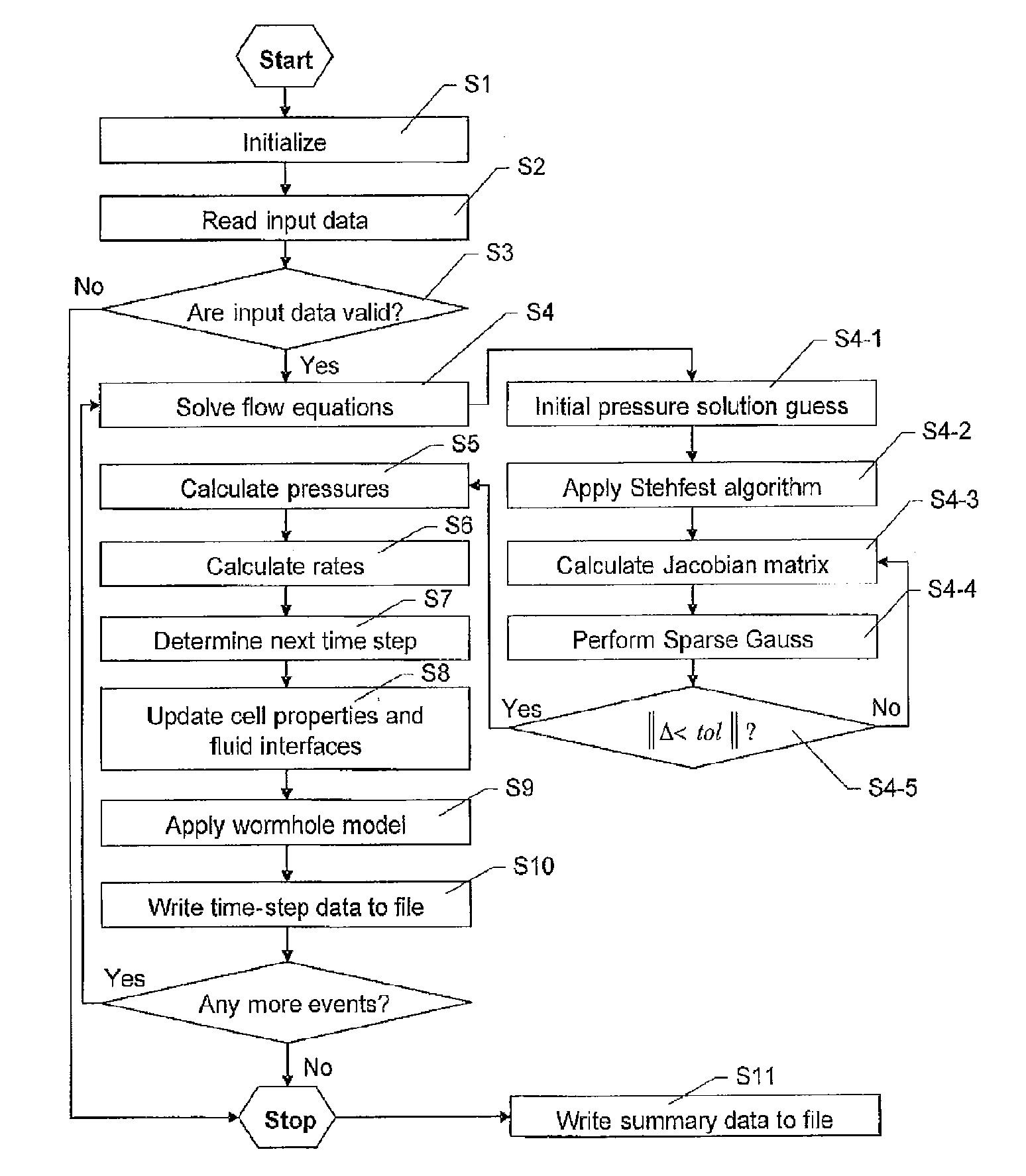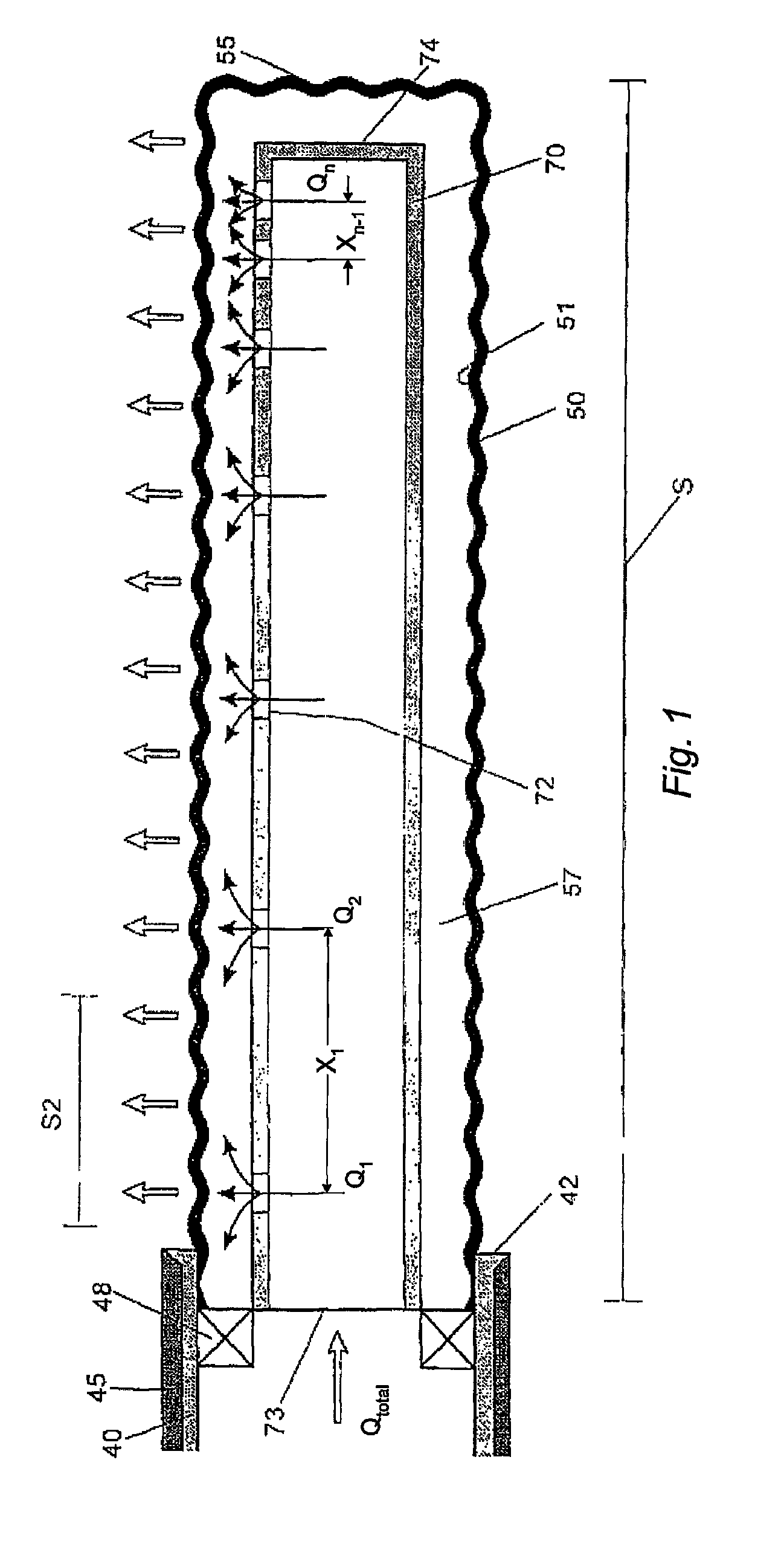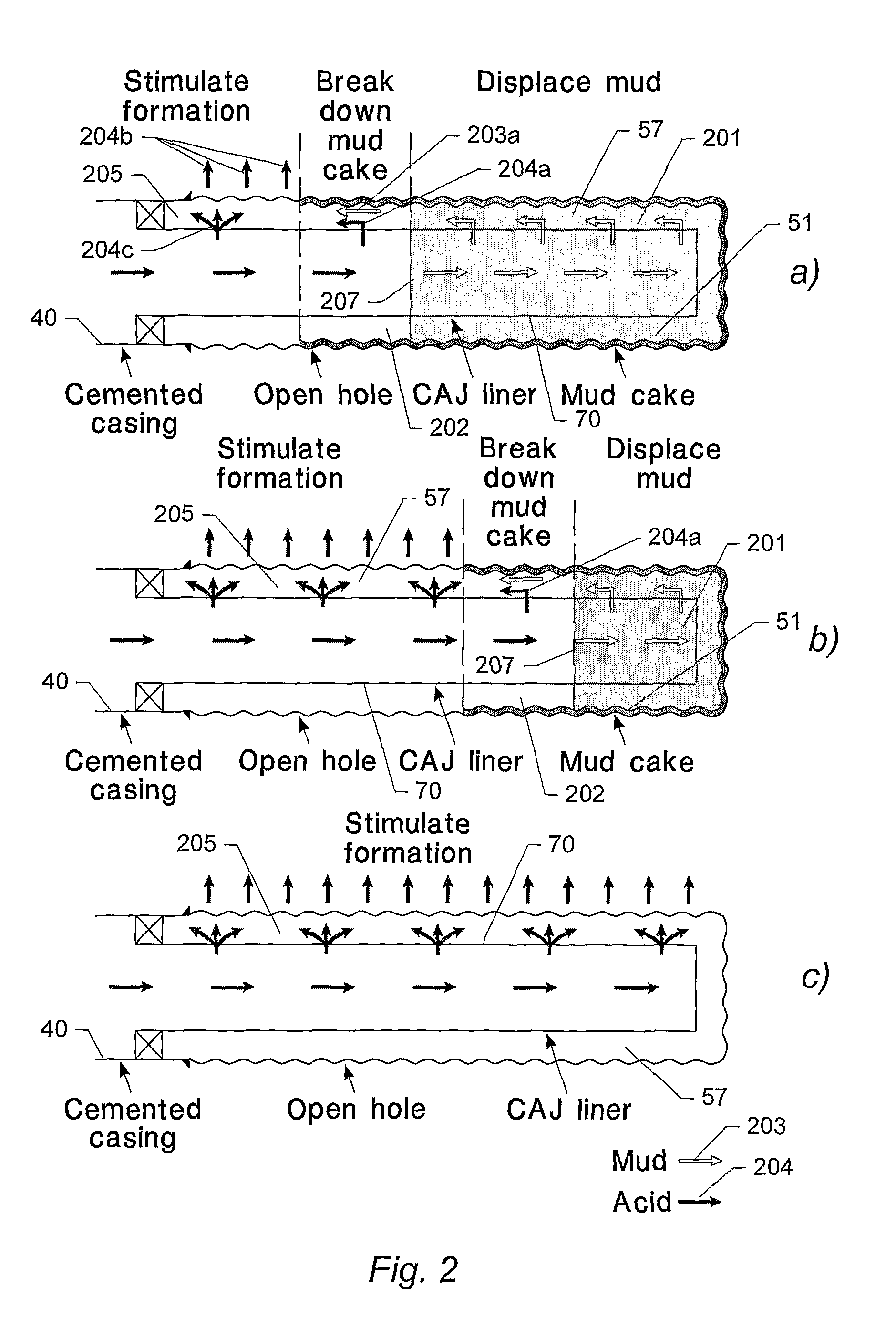Flow simulation in a well or pipe
a well or pipe technology, applied in the direction of analogue and hybrid computing, well-logging of electric/magnetic signals, nuclear radiation detection, etc., can solve the problems of insufficient simulation of the stimulation process of such wells, individual reservoir layers may be very thin, etc., to achieve accurate and efficient numerical solutions.
- Summary
- Abstract
- Description
- Claims
- Application Information
AI Technical Summary
Benefits of technology
Problems solved by technology
Method used
Image
Examples
Embodiment Construction
[0051]FIG. 1 shows a schematic cross-sectional view of a bore-hole and the completion of a CAJ liner. In particular, FIG. 1 illustrates the horizontal portion of a well bore 50 for the production of oil or gas from a reservoir. The well bore 50 as such is conventionally established by drilling with drill bits having decreasing operation diameter in a manner known as such and described in e.g. EP1184537.
[0052]When the drill bit has reached the desired reservoir section, a so-called reservoir liner 40 is introduced, and cement is pumped down to form an isolation 45 between the outside of the reservoir liner 40 and the wall of the well bore 50 in the reservoir 1. Then drilling is continued to provide the end section S of the well bore 50 that extends within the reservoir 1 past the end 42 of the reservoir liner 40.
[0053]A stimulation liner / tubing 70 is introduced into the end section S by means of conventional introduction equipment, and the production tubing (not shown) is introduced ...
PUM
 Login to View More
Login to View More Abstract
Description
Claims
Application Information
 Login to View More
Login to View More - R&D
- Intellectual Property
- Life Sciences
- Materials
- Tech Scout
- Unparalleled Data Quality
- Higher Quality Content
- 60% Fewer Hallucinations
Browse by: Latest US Patents, China's latest patents, Technical Efficacy Thesaurus, Application Domain, Technology Topic, Popular Technical Reports.
© 2025 PatSnap. All rights reserved.Legal|Privacy policy|Modern Slavery Act Transparency Statement|Sitemap|About US| Contact US: help@patsnap.com



